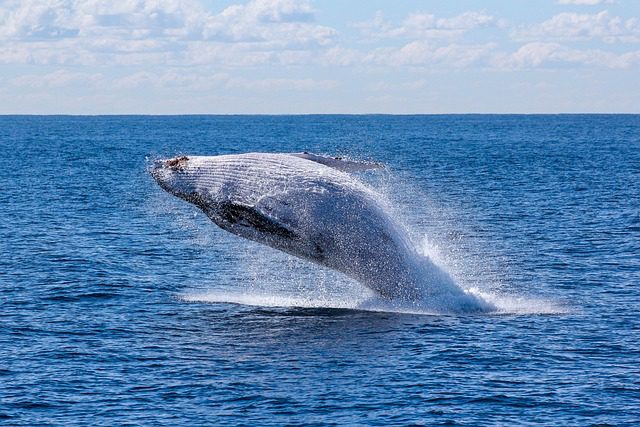Whale Watching in Sri Lanka:
Dreaming of witnessing the awe-inspiring blue whale, the largest creature on Earth? Well, you don’t have to wait for a once-in-a-lifetime opportunity, thanks to whale watching in Sri Lanka. These majestic marine giants can be spotted year-round along the Sri Lankan coast. But before you embark on your whale watching journey, here are essential things you need to know.
Whale Watching in Mirissa
Mirissa, a charming fishing village nestled between Matara and Galle on the south coast, is your gateway to a whale-watching paradise. Known for its stunning scenery, pristine beaches, and delectable cuisine, Mirissa offers convenient access from major cities like Negombo. It’s an ideal destination for a family getaway.
If you’re planning a whale watching adventure in Mirissa, it’s crucial to pick the right time to maximize your chances of spotting these majestic creatures. The prime season for whale watching in Mirissa falls between November and April. During this period, the ocean is typically calm, and it aligns with the annual migration of whales from the southern hemisphere to the northern hemisphere.
On the flip side, the period from May to October is considered the off-season. The ocean tends to be rough, and the likelihood of encountering whales is significantly lower. Additionally, the chances of experiencing seasickness are considerably higher during this time. So, we strongly advise against making bookings for whale watching during the off-season.
- Best time for whale watching in Mirissa: November to April
Whale Watching in Trincomalee
- Trincomalee, on the East Coast, is another hotspot for dolphin and whale watching adventures. With its natural harbor and breathtaking coastal beauty, it’s a must-visit, especially for families.
- Best time: November to April
Types of Dolphins and Whales
- The southern coast offers a diverse range of species, including the iconic blue whale, sperm whales, right whales, fin whales, killer whales, and whale sharks.
- Various dolphins, such as common dolphins, bottlenose dolphins, spinner dolphins, and striped dolphins, playfully swim in these waters.
- In Trincomalee, you can spot blue whales, sperm whales, and sometimes even killer whales. Dolphin species like bottlenose, spinner, striped, and Risso’s dolphins also grace these waters.
What Are the Chances of Spotting Whales in Mirissa?
During the peak whale watching season, which spans from November to April, your chances of spotting these magnificent creatures are an impressive 98%.
While blue whales are the most commonly observed, you may also have the opportunity to see sperm whales, fin whales, Bryde’s whales, short-finned whales, dolphins, and on rare occasions, killer whales and whale sharks. Occasionally, you might even catch a glimpse of turtles and flying fish during your excursion.
- It’s essential to keep in mind that you’re venturing into the wild, and wildlife sightings are never guaranteed.
How Long Does a Whale Watching Trip Last?
- A typical whale watching expedition in Mirissa & Trincomalee spans anywhere from 3 to 5 hours, with an average duration of around 4 hours.
What to Bring?
- If you have specific medications, carry them, as the journey can last up to five hours.
- Dress comfortably for the heat, apply sunscreen generously, especially on the kids, to shield against UV rays.
How to Get to Mirissa?
Start your trip with Ceylon Lodge Airport Transit Hostel. Ceylon Lodge is a budget-friendly village hostel. The hostel is located right in-between the Colombo airport (BIA) and the main city, Negombo. Take the bus from Ceylon Lodge to Negombo bus terminal. Then, take the bus to Mirissa from Negombo.
- Ceylon Lodge is only 5 minutes away from the Bandaranaike International Airport.
- Negombo city is only a 10 minutes drive from Ceylon Lodge.


0 Comment